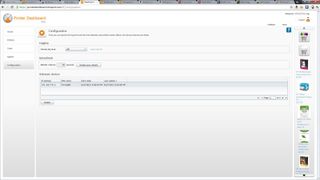ThinPrint Printer Dashboard review: First Look
Managing printers doesn't have to be taxing as Kat Orphanides find outs when she puts the Printer Dashboard management utility to the test.
COSTS SCREEN
The Costs tab helpfully aggregates the pricing data for all of the consumables used by every printer you own. We've only entered information for our mono laser printer, which makes the calculations fairly simple.
However, the Costs tab feels underdeveloped. It'll calculate how much you're paying in total for your consumables, but there's currently no way of calculating how much a single page costs when you add up toner and ink, nor of adding up a printer's total cost of ownership over a given period of time. Such calculations aren't particularly difficult to carry out, so their absence is a striking omission. When you enter any new cost data, you'll also have to remember to click the Save button before you move to another page, otherwise your new entries will be deleted.
AGENTS SCREEN
The Agents tab lets you view and manage all the Printer Dashboard agents installed on PCs across your network. You only need one installed to monitor your networked printers, but if you have USB or software-based logical printer devices that you wish to control, you'll need an Agent installed on the PC they're connected to or installed on. Each Agent can be configured to monitor the network for different things.
The first one you install is automatically configured to look for network printers and printer shares as well as the local printers connected to the PC it's installed on. By default, subsequent agents installed on the same network only look for local printers, but you can change what each does using simple checkbox options.
CONFIGURATION SCREEN
Get the ITPro. daily newsletter
Receive our latest news, industry updates, featured resources and more. Sign up today to receive our FREE report on AI cyber crime & security - newly updated for 2024.
Finally, the Configuration tab lets you determine details such as logging - which sadly doesn't log all printer activity, but instead is a diagnostic tool that ThinPrint's technical support may ask you to enable if there's a problem. You can also configure how frequently the Agents refresh their picture of what devices they can see and see a list of unknown network devices that may or may not be printers or printer servers.

A configuration screen allows you to configure logging, refresh intervals and view unknown devices on the network.
K.G. is a journalist, technical writer, developer and software preservationist. Alongside the accumulated experience of over 20 years spent working with Linux and other free/libre/open source software, their areas of special interest include IT security, anti-malware and antivirus, VPNs, identity and password management, SaaS infrastructure and its alternatives.
You can get in touch with K.G. via email at reviews@kgorphanides.com.





